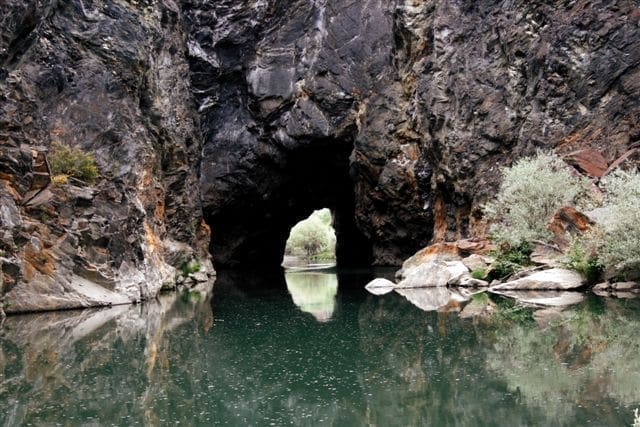The Ribeira Sacra of Lugo encompasses the following thirteen municipalities in the south of the province of Lugo: A Pobra do Brollón, Bóveda, Carballedo, Chantada, Monforte de Lemos, O Saviñao, Pantón, Paradela, Portomarín, Quiroga, Ribas de Sil, Sober, and Taboada.
From a geographical perspective, this territory hosts the deep river valleys carved by the Sil and Miño rivers as they pass through these lands. During the Middle Ages, various religious communities chose this area as a place for spiritual retreat, founding monasteries and initiating the cultivation of vineyards, an activity that, taking advantage of the advantageous conditions provided by the terrain’s elevation and the microclimate of the river valleys, persists to this day as the best example of coexistence between the landscape and the inhabitants of a territory declared a Cultural Landscape and Biosphere Reserve, and which in 2026 will be Spain’s candidate for World Heritage status.
The environmental values of the territory are also recognized by various protection figures that cover the areas of greatest biological and geomorphological uniqueness: the Special Conservation Zone of the Río Cabe, Monte Faro, the Sil Canyon, or the UNESCO Global Geopark
Montañas do Courel, with natural formations of notable scientific value such as the Campodola Leixazós Fold, declared a Natural Monument.
In terms of Cultural Heritage, the Ribeira Sacra is one of the enclaves with the highest concentration of rural Romanesque architecture in Europe, a value to which other assets are added that testify to the passage of different cultures through the territory throughout history, such as the Montefurado tunnel or forts like those of Cereixa or Fión, in addition to the Camino de Santiago, present with two official routes, the French and the Winter routes, the historic centers of Monforte and Chantada and the significant museum offerings, including cultural facilities such as the Ecomuseum of Arxeriz, the Railway Museum, the Wine Center, the Pazo de Tor or the Geological and Ethnographic Museums of Quiroga or the Rectoral of Gundivós, with live pottery demonstrations.
Regarding intangible heritage, the Ribeira Sacra stands out mainly for the festivals celebrating local gastronomic products, mainly wine with Protected Designation of Origin (Sober, Pantón, Quiroga, Chantada), oil and honey (Quiroga), carne ao caldeiro (Carballedo), bone broth (Taboada), aguardiente (Portomarín) and cherries in Ribas de Sil and Belesar, as well as other unique cultural manifestations such as the Entroido Ribeirao, Oso de Salcedo, Folión de Carros or the Queima das fachas.
HIGHLIGHTS OF THE RIBEIRA SACRA LUCENSE
- WATER LANDSCAPES (RIVERS SIL AND MIÑO)
- HISTORIC CENTERS OF PORTOMARÍN, CHANTADA, AND MONFORTE DE LEMOS
- RIVER ROUTES ALONG THE MIÑO AND SIL
- VIEWPOINTS ROUTE (SIL AND MIÑO RIVERS)
- ROMANESQUE ART
- WINE TOURISM: VISITS TO WINERIES
- ACTIVE / SPORTS TOURISM (hiking, water sports, golf, horse riding…)
- GUNDIVÓS POTTERY
- MUSEUMS
- WATERFALLS (AUGACAÍDA, FONDÓS, QUIROGA WATERFALLS ROUTE)
- URBAN ART MURALS AND SGRAFFITO
- CAMINO DE SANTIAGO (FRENCH AND WINTER ROUTES)

 Provincia de Lugo, Galicia
Provincia de Lugo, Galicia














 Ribeira Sacra Lucense
Ribeira Sacra Lucense 



